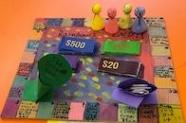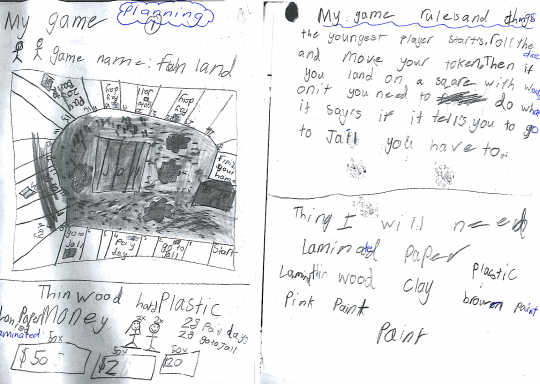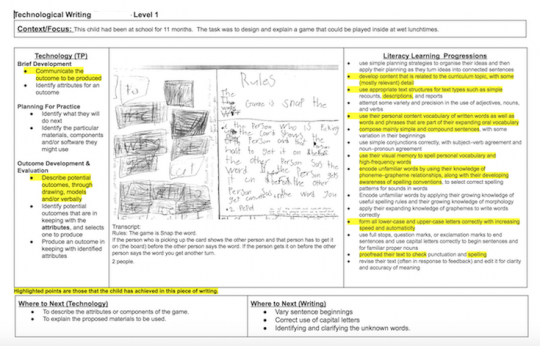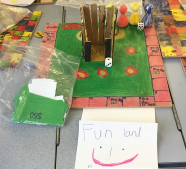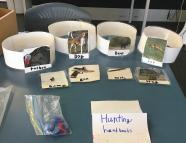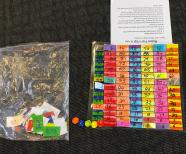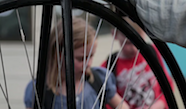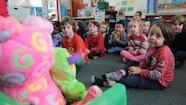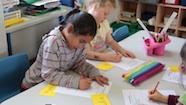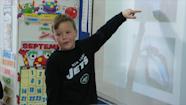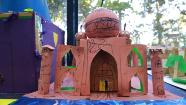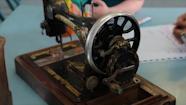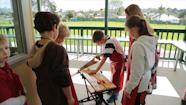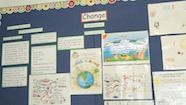Games for rainy days, years 1 –3
An authentic need for technological outcomes – games!
Fun and engaging games for inside days was an authentic need recognised by the teachers and the years 1–3 students at Waitaki Valley School.
Attributes of games
What games do we like?


To begin, the students analysed and played a range of familiar games, including board games, card games, skittles, pick up sticks, and knuckle bones. They identified which ones they liked playing and the features of the games that contributed to their enjoyment.
What are physical and functional attributes?
The teachers introduced the language of the characteristics of technological outcomes through analysing familiar objects. They gave the students a box of brushes and introduced the concepts of physical and functional attributes.
The teachers asked the students questions to draw out the attributes of brushes, for example:
- Why is this a brush?
- What is the purpose of the brush?
- Who might use this brush?
- What attributes does the brush have?
- What is the relationship between the attributes and the purpose of the brush?
- How do the attributes suit the purpose?
What are the key attributes of a good game?
Armed with new vocabulary and understandings of the characteristics of technological outcomes, the students then put together a list on the whiteboard of all of the attributes that they had identified from the games they enjoyed.
Teachers then asked, “If we were going to make a really good game what would be its key attributes?”
They agreed as a class that the key attributes for their games were:
- allowing for two or more players
- being competitive and having a winner
- being age appropriate
- having clear playing instructions
- complying with the school rules about inside behaviour (for example, the game could require walking and sitting but no running or jumping)
- being durable.
The students then analysed the games they had enjoyed on the basis of these attributes to check their validity.
Designing games
Technological modelling
The students began the design of their own games based on the key attributes identified earlier. The technological modelling of their games included drawing and explaining the game.
Planning for practice
Planning for practice is a component of technological practice.
The indicators of progression at level 1 in planning for practice state that students can:
- identify what they will do next
- identify the particular materials, components, and/or software they might use.
The students recorded the resources they required to make their games and discussed the next steps for the development of their outcomes/games with the teacher.
Instructional writing
Instructions had to be written and attached to the games.
Students trialled their instructions with other students and adapted them in response to gaps identified. Writing the instructions was a great opportunity to integrate technology and literacy, and to demonstrate progression in writing.
Outcome development and evaluation
At level 1 for outcome development and evaluation in the technological practice strand students can:
- describe potential outcomes, through drawing, models, and/or verbally
- identify potential outcomes that are in keeping with the attributes, and select one to produce
- produce an outcome in keeping with identified attributes.
The students modelled their outcomes (their games) through drawing and discussion, selected one to produce, and evaluated them against the attributes that the class had developed for a good game.
Materials
Analysing materials


The students had examined and identified the materials in existing games. This was an opportunity to add to their materials vocabulary and also to begin to talk about the performance properties of materials.
Using materials
The students used a range of materials when making their own games and were required to work out the best material to use and also how they could shape or join it to create their designs.
Teachers agreed that the materials available would include, wood, card (this could be laminated), play dough (this was used to make initial models for items to be made out of modelling clay) modelling clay (suitable for making dice and counters), and circular foam pieces. Paint and sharpies were available for decorative purposes.
The students reviewed their game designs on the basis of the materials available and where necessary modified their designs. Some also sourced resources from home.
One student made a variation of a Connect 4 game. One board was made out of wood that their parent had cut holes out of and then glued to another board. The student helped with this work and could see that the circles of wood cut out would be great counters, so they sanded the circles to make counters.
This learning about materials aligns with the technological products component at level 1:
- identify materials that technological products are made from
- identify performance properties of common materials
- identify how the materials have been manipulated to make the product.
The students were very creative with the range of materials made available. One of the teachers noted that an opportunity to mould plastic could add to the potential outcomes. (For an example of using plastic moulding, see the use of the plastic former in Night lights as technological systems.)
Examples of the outcomes
Fun land
This was a board game that had a jail made out of sticks giving a 3D effect. In this game, players could end up in jail and would move their counter to the jail.
Hunting headbands
This game was made up of laminated headbands that were joined with velcro dots. It was based on the students’ interest in hunting.
Rainbows End
Rainbows End was a board game that had cards. The student had made storage containers from card, which created a 3D effect.
Pop it Up
In this game, when players landed on some of the squares, they lifted the flap on the square to read further instructions. The player either went forward and received money or went back and paid the bank money.
Evaluation
Teacher, Susan Sime says the games have been much used and enjoyed by the students on rainy days.
The students and I really enjoyed this unit. The context was purposeful and suited the children. I feel like I am teaching technology so much better as my understanding has improved as a result of our technology PLD. Last year we did the recipe book, but this year was another step up.
Susan Sime
The students were very keen to take the games home at the end of the year to play with their families.
Related videos
Talking about technological systems in primary (04:50)
Moira Patterson explains technological systems and shares examples to inspire.
New entrants identify the made world (03:14)
New entrants explore what technology is with teacher Jill Harper.
Year 1–2 technologists design for a purpose (03:52)
Students in years 1 and 2 discuss with their teacher why technologists make things out of different materials.
Year 1–2 future technologists (02:06)
Kathy Chandler and her year 1–2 students discuss technological outcomes and what technologists do.
Cars are technological outcomes (03:53)
James Mawson explores cars as technological outcomes with his year 2 class.
Building technology inquiries in years 1–6 (02:47)
Shannon Maloney talks about building rich technology units within a programme of inquiry in years 1–6.
Hooking primary students into technology (02:34)
Diana Comp shares some of her strategies for engaging primary students and growing understandings in technology.
Planning for technology at primary (03:59)
Jude Black and Diana Comp describe their approach to planning at Green Bay Primary.
Technology isn’t just about making things (03:54)
Anne uses everyday opportunities to make technology connections with her year 3 class.

